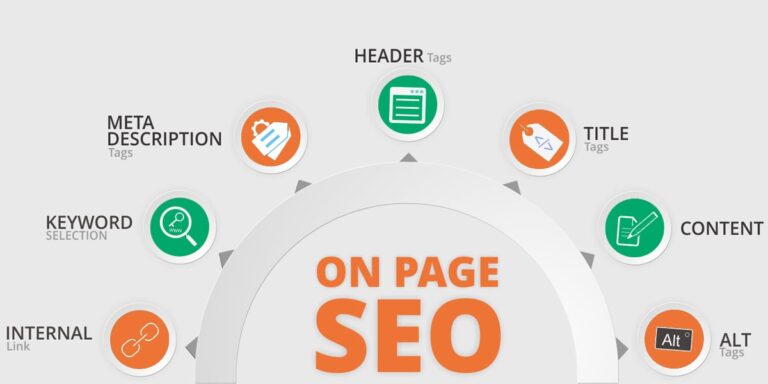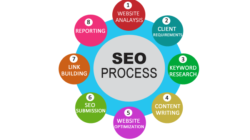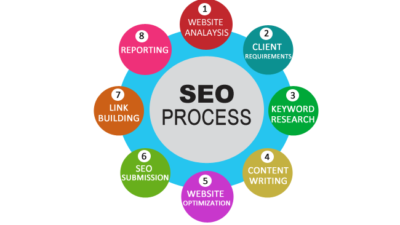When you’re building a website, it’s important to think about SEO in the same way you would think about how to build a house. You need to start with a strong foundation and work your way up from there. A good foundation will help your site stand out when people look for keywords in their search engine results pages (SERPs). Without this step, no matter how hard you try or what tricks you use, your site won’t get ranked as high as it should be.
The first step to improving SEO is to build a good foundation.
The first step to improving SEO is to build a good foundation. This means that you have all of your pages and subdomains organized correctly, with the correct amount of content on each page. If you don’t have enough content, then it will be hard for Google and other search engines to find what they need when they come across your site.
A good foundation also includes having links pointing back inbound from other sites that are relevant to yours (for example: if another website sells products similar to yours). This helps increase traffic since people who find one product on another website would probably also want more information about it before buying something themselves!
Creating keyword-rich text is part of building a good foundation.
Keywords are the most important part of your website’s content. They provide a way for search engines to understand what you do, and how well you do it.
To find the right keywords, try using Google Keyword Planner or another keyword research tool like Wordtracker or SEMrush. This will help you determine which terms people use when searching online, so that when they see your website in SERPs (search engine results pages), they can easily click through and get more information about what you offer.
Once you have identified some potential keywords that fit with your business model/niche/industry focus, it is time to start writing text around those words so that search engines can understand how relevant those terms are for users visiting from around the world!
Make sure you’re optimizing each page individually.
- Make sure each page has a title tag, meta description and H1 tags.
- Each of your pages should have its own unique meta keyword. If you have multiple pages on your website that share the same content, make sure they all have different types of meta keywords so search engines can differentiate between them and index only one or none at all.
- A good way to optimize your pages is by making sure they have sitemap files pointing back at them (with links).
Make sure you have only one H1 tag per page.
One of the easiest ways to improve SEO is by making sure that you have only one H1 tag per page. If you have multiple H1 tags on your site, this could cause issues for search engines because it makes it hard for them to determine which one should be used as the main heading.
You can use more than one H1 tag if they are used correctly and in a logical order. For example, if you have an article about “how to cook steak” and then another article about “how to make steak sauce,” they should both use an H1 tag called “How To Cook Steak” because this is where all of the information would be concentrated (the title).
Don’t use too many different font styles and sizes.
- Don’t use too many different font styles and sizes.
- Use a standard font typeface, size, color and weight.
- Try to keep the main body of your content in one style or another—if you want to use an italicized or bolded font for certain sections of your page, make sure that it’s consistent throughout. For example: if you want a heading with bold text on it (like “About”), don’t then switch back into regular text for every paragraph below it; instead just keep all of those paragraphs in plain old boring old normal serif typeface!
Focus on each page individually.
Now that you’ve gotten a good overview of how to improve SEO on your website, it’s time to start focusing on individual pages. It’s important not to worry about the other pages at this point because they’re still being crawled by Google and there’s no way for you or anyone else involved with your site (except for maybe an overworked webmaster) know what kind of content will show up on them.
Instead, focus all of your attention on the content itself! Make sure that each page has relevant information about its title and URL: if these are both accurate representations of what you want people reading about when they visit that particular page—and nothing more than that—then everything else should fall into place naturally as well.
Follow these steps for an easy way to improve SEO.
To optimize your content for search engines, follow these steps:
- Optimize each page individually. Don’t worry about all of them at once—find the most important pages on your site and focus on those first. Then check in with the rest of them again after you’ve got things working well on one or two.
- Make sure you’re not using too many different font styles and sizes (for example, consider using a serif font instead of sans-serif). You want to avoid creating visual clutter that could distract users from what they came here for in the first place! Also keep an eye out for excessive paragraphs; they can be difficult to read through when there are too many words per line (and thus less space available) or if there aren’t enough lines altogether within each page’s body text section(s).
Conclusion
If you’ve followed these steps, you’re well on your way to improving your website’s SEO. The next step is to focus on the other factors that affect search engine rankings, such as social media and content marketing.








